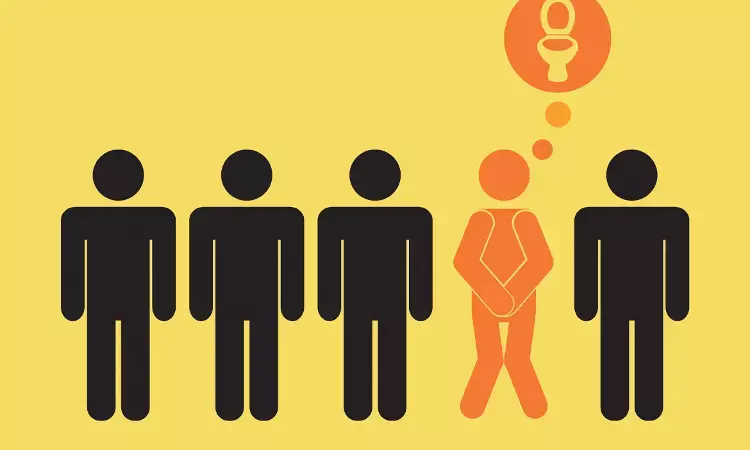- Home
- Medical news & Guidelines
- Anesthesiology
- Cardiology and CTVS
- Critical Care
- Dentistry
- Dermatology
- Diabetes and Endocrinology
- ENT
- Gastroenterology
- Medicine
- Nephrology
- Neurology
- Obstretics-Gynaecology
- Oncology
- Ophthalmology
- Orthopaedics
- Pediatrics-Neonatology
- Psychiatry
- Pulmonology
- Radiology
- Surgery
- Urology
- Laboratory Medicine
- Diet
- Nursing
- Paramedical
- Physiotherapy
- Health news
- Fact Check
- Bone Health Fact Check
- Brain Health Fact Check
- Cancer Related Fact Check
- Child Care Fact Check
- Dental and oral health fact check
- Diabetes and metabolic health fact check
- Diet and Nutrition Fact Check
- Eye and ENT Care Fact Check
- Fitness fact check
- Gut health fact check
- Heart health fact check
- Kidney health fact check
- Medical education fact check
- Men's health fact check
- Respiratory fact check
- Skin and hair care fact check
- Vaccine and Immunization fact check
- Women's health fact check
- AYUSH
- State News
- Andaman and Nicobar Islands
- Andhra Pradesh
- Arunachal Pradesh
- Assam
- Bihar
- Chandigarh
- Chattisgarh
- Dadra and Nagar Haveli
- Daman and Diu
- Delhi
- Goa
- Gujarat
- Haryana
- Himachal Pradesh
- Jammu & Kashmir
- Jharkhand
- Karnataka
- Kerala
- Ladakh
- Lakshadweep
- Madhya Pradesh
- Maharashtra
- Manipur
- Meghalaya
- Mizoram
- Nagaland
- Odisha
- Puducherry
- Punjab
- Rajasthan
- Sikkim
- Tamil Nadu
- Telangana
- Tripura
- Uttar Pradesh
- Uttrakhand
- West Bengal
- Medical Education
- Industry
Magnetic Stimulation Shows Promising Results for Treatment of Urinary Incontinence

The problem of urinary incontinence (UI) is becoming more common due to the rising elderly population and the trend of rising prevalence of urinary incontinence with ageing. Deciding on a conservative or surgical treatment approach depends predominantly on the type and severity of UI and comorbidities. A recent study suggests that urinary incontinence improved after treatment with magnetic stimulation. The study findings were published in the Journal of Clinical Medicine on November 08, 2021.
Magnetic stimulation (MS) is a technology introduced in 1998 that has been used for stimulating the pelvic floor muscles. MS has been investigated as an alternative treatment to electrical stimulation in neurology. It is offered as a treatment for UI, although weak evidence of the short-term and long-term effects has been found in systematic reviews. However, the current European Association of Urology recommends against treating UI or overactive bladder (OAB) with magnetic stimulation (strength of recommendation = strong). To further evaluate this, researchers of the Ljubljana University Medical Center, 1000 Ljubljana, Slovenia, conducted a study to assess and analyze the effectiveness of MS in the treatment of urinary incontinence. They also performed a systematic review to combine and compare results with results from their clinical study.
The clinical study was a prospective non-randomized study, carried out at the Ljubljana University Medical Center's Gynecology Division. The researchers included a total of 82 female patients, irrespective of their UI type.
The study was carried out in 3 stages. In the first stage, the patients completed a questionnaire adapted to the internationally validated ICIQ-UI SF questionnaire, which provides a subjective assessment of UI problems. In the second stage, MS treatment was carried out with 10 therapy sessions on MS and the third stage included a checkup 3 months after the treatment was completed, during which the patients completed the same questionnaire once again (as before the treatment).
Key findings of the study were:
- Upon analysis, the researchers found that UI improved after treatment with MS.
- They noted that the ICIQ-UI SF score improved in patients regardless of the type of UI.
- However, they observed the greatest decrease in post-treatment assessment ICIQ-UI SF scores in patients with stress urinary incontinence (SUI).
The authors concluded, "Based on the findings described above, it can be concluded that MS is a successful non-invasive conservative method for treating UI. Future studies are necessary, all of which should include a large sample size, a control group, an optimal research protocol, pre-treatment analyses, standardization, and longer follow-ups."
For further information:
Medical Dialogues Bureau consists of a team of passionate medical/scientific writers, led by doctors and healthcare researchers. Our team efforts to bring you updated and timely news about the important happenings of the medical and healthcare sector. Our editorial team can be reached at editorial@medicaldialogues.in.
Dr Kamal Kant Kohli-MBBS, DTCD- a chest specialist with more than 30 years of practice and a flair for writing clinical articles, Dr Kamal Kant Kohli joined Medical Dialogues as a Chief Editor of Medical News. Besides writing articles, as an editor, he proofreads and verifies all the medical content published on Medical Dialogues including those coming from journals, studies,medical conferences,guidelines etc. Email: drkohli@medicaldialogues.in. Contact no. 011-43720751


